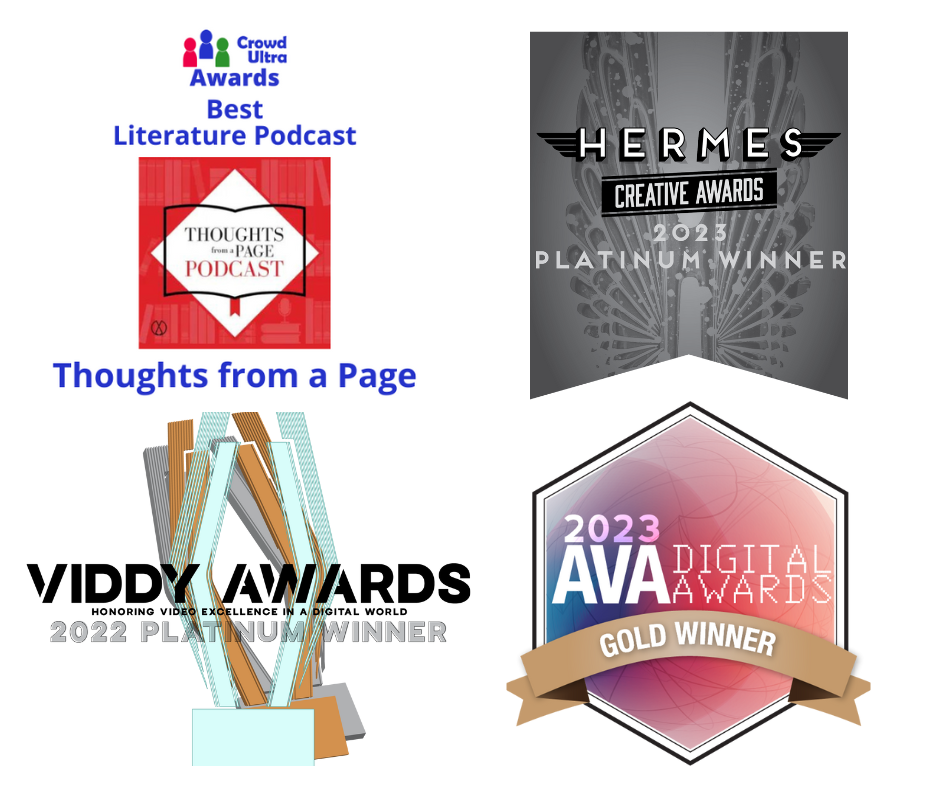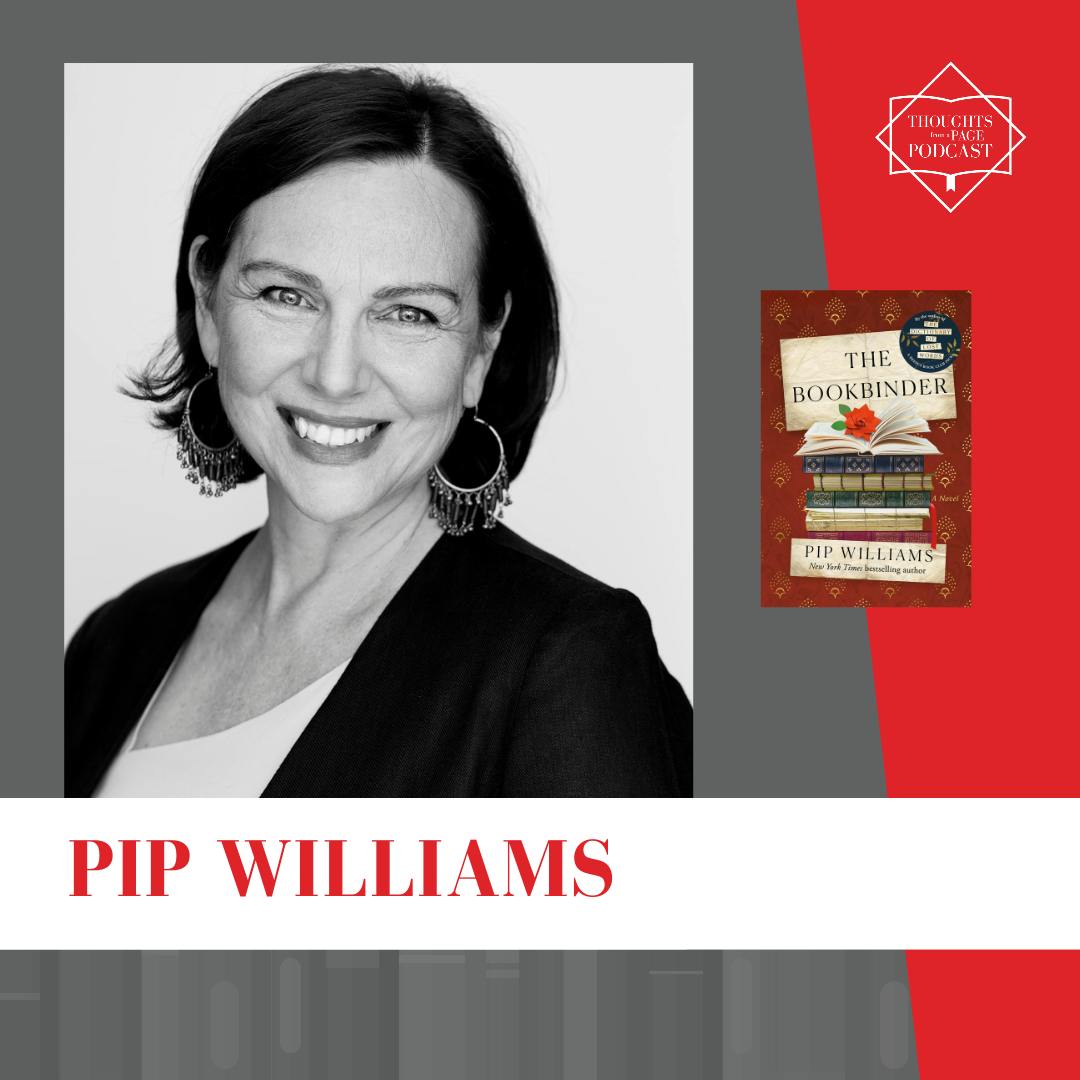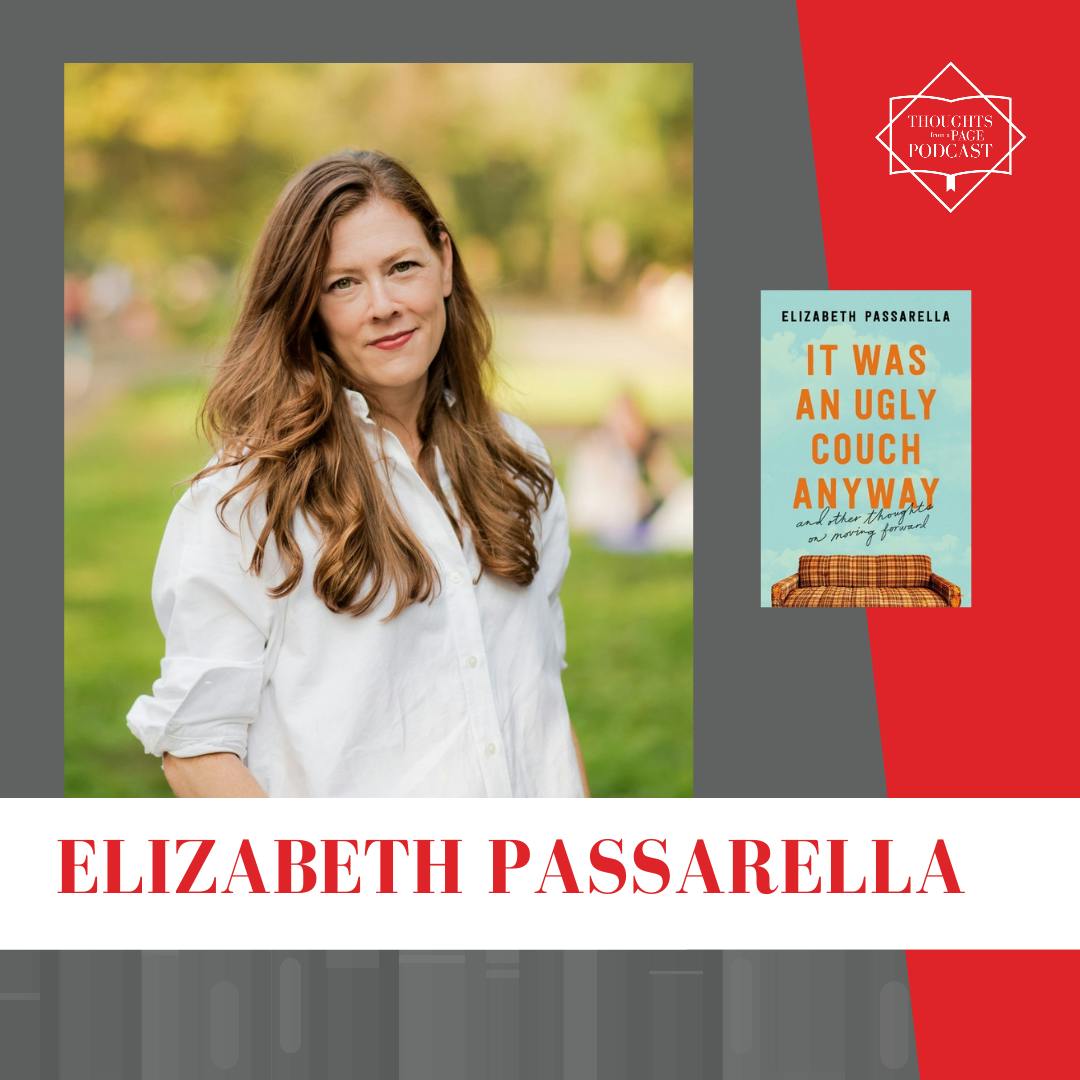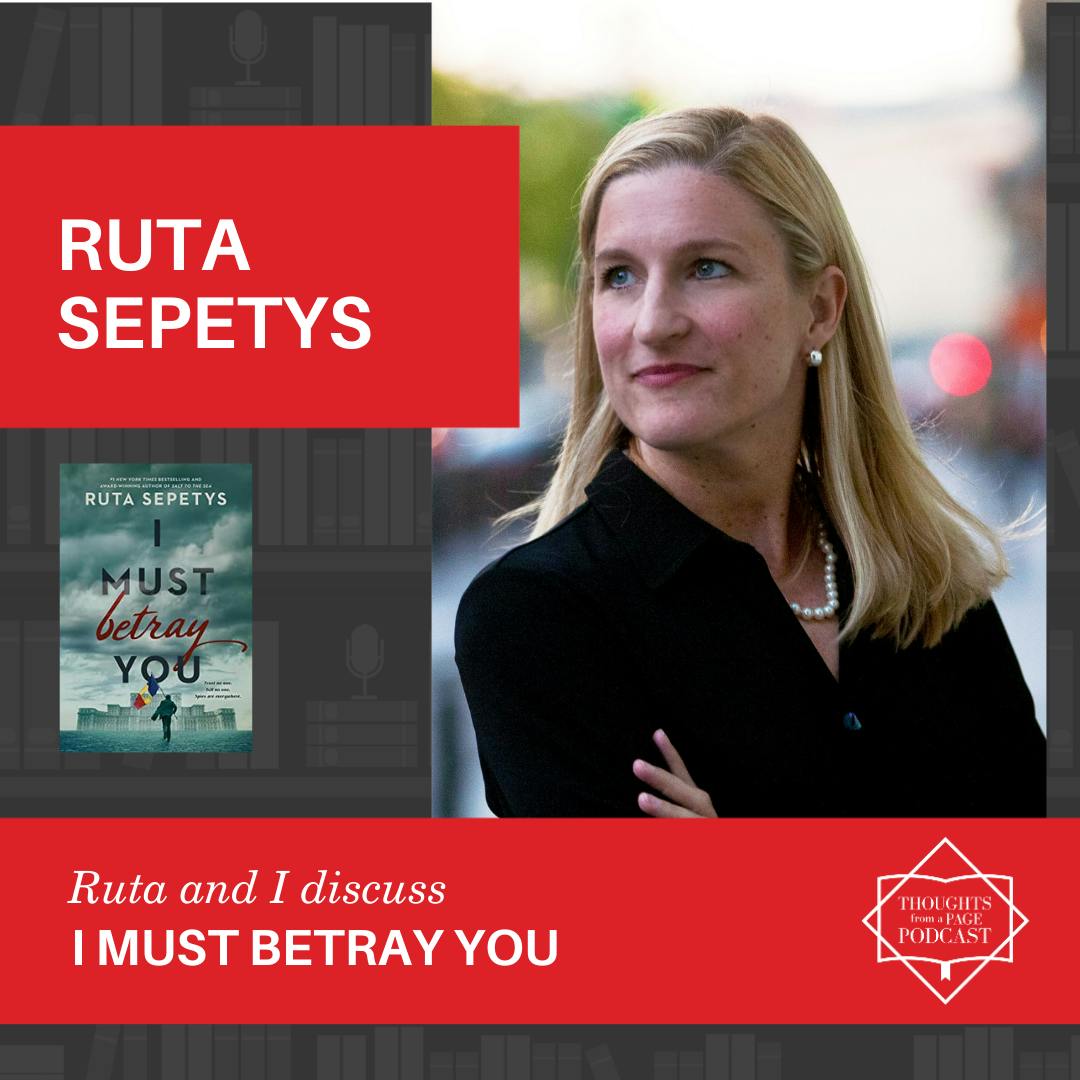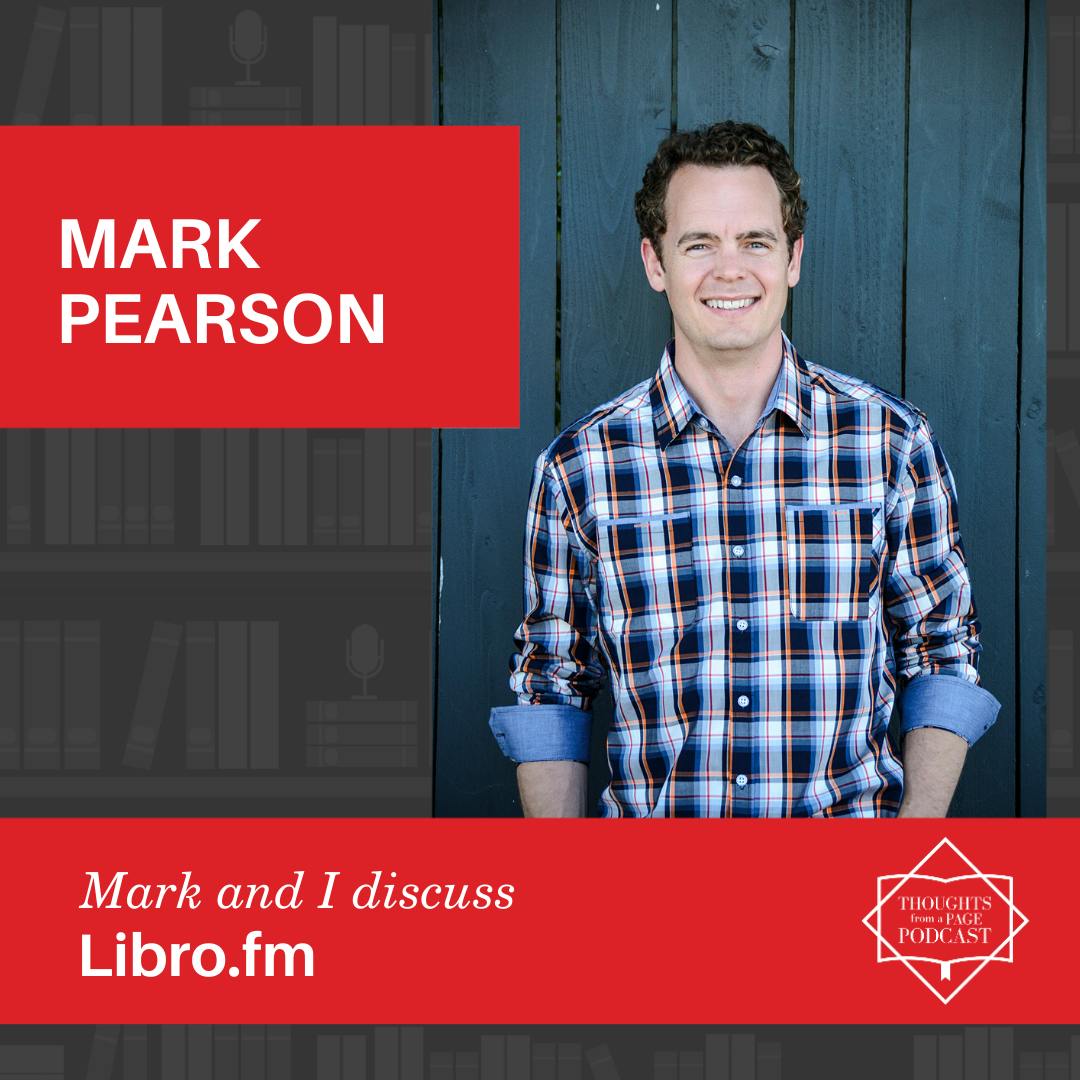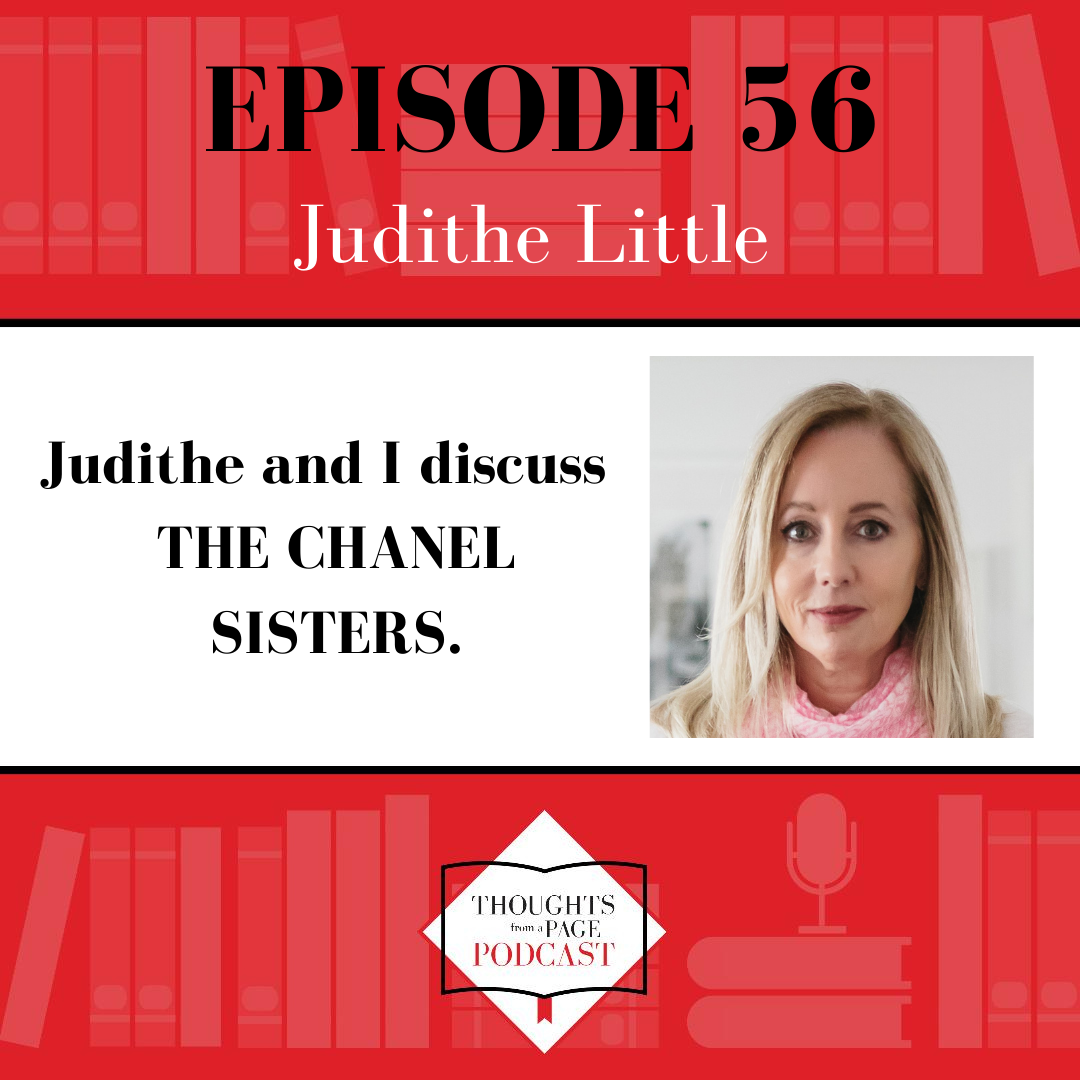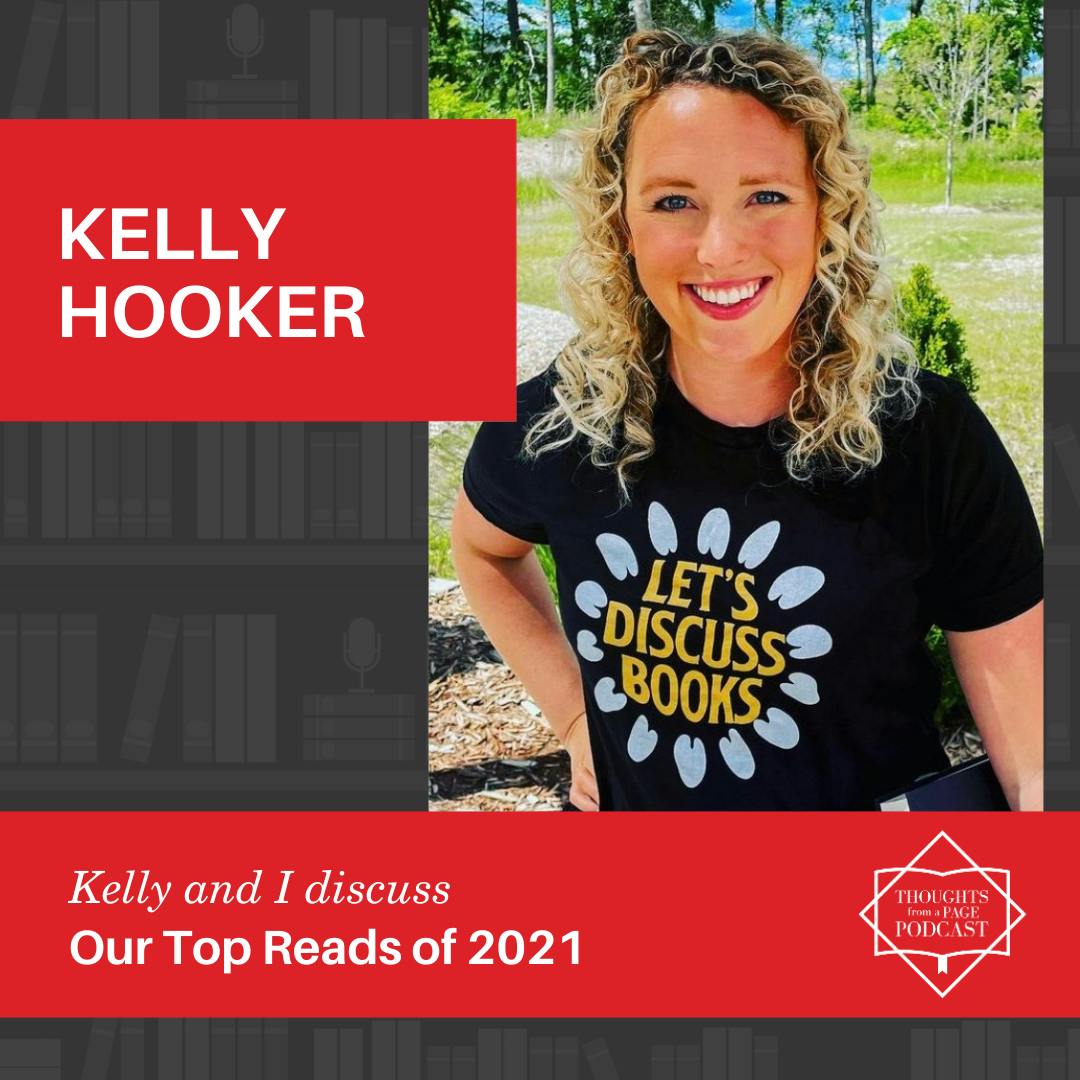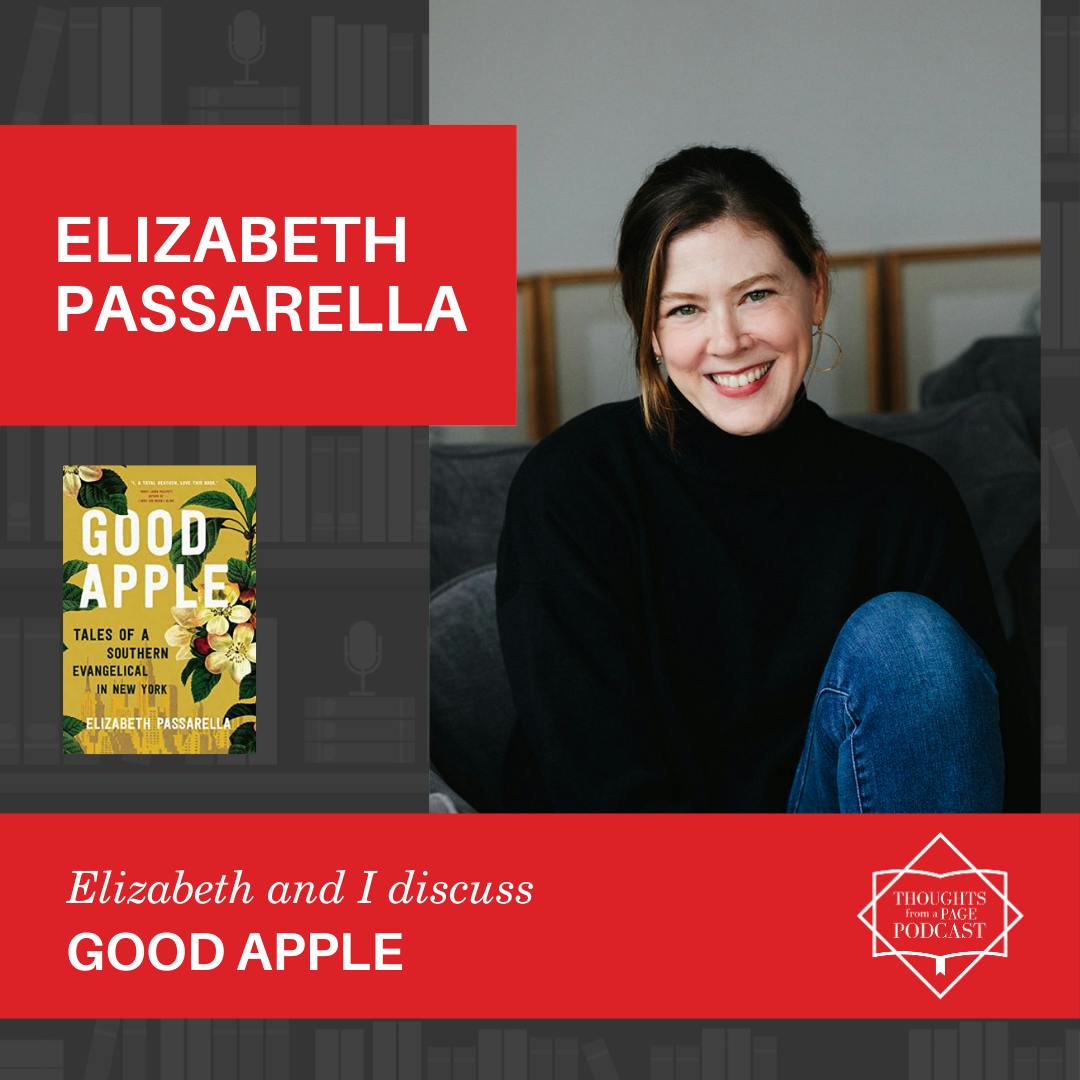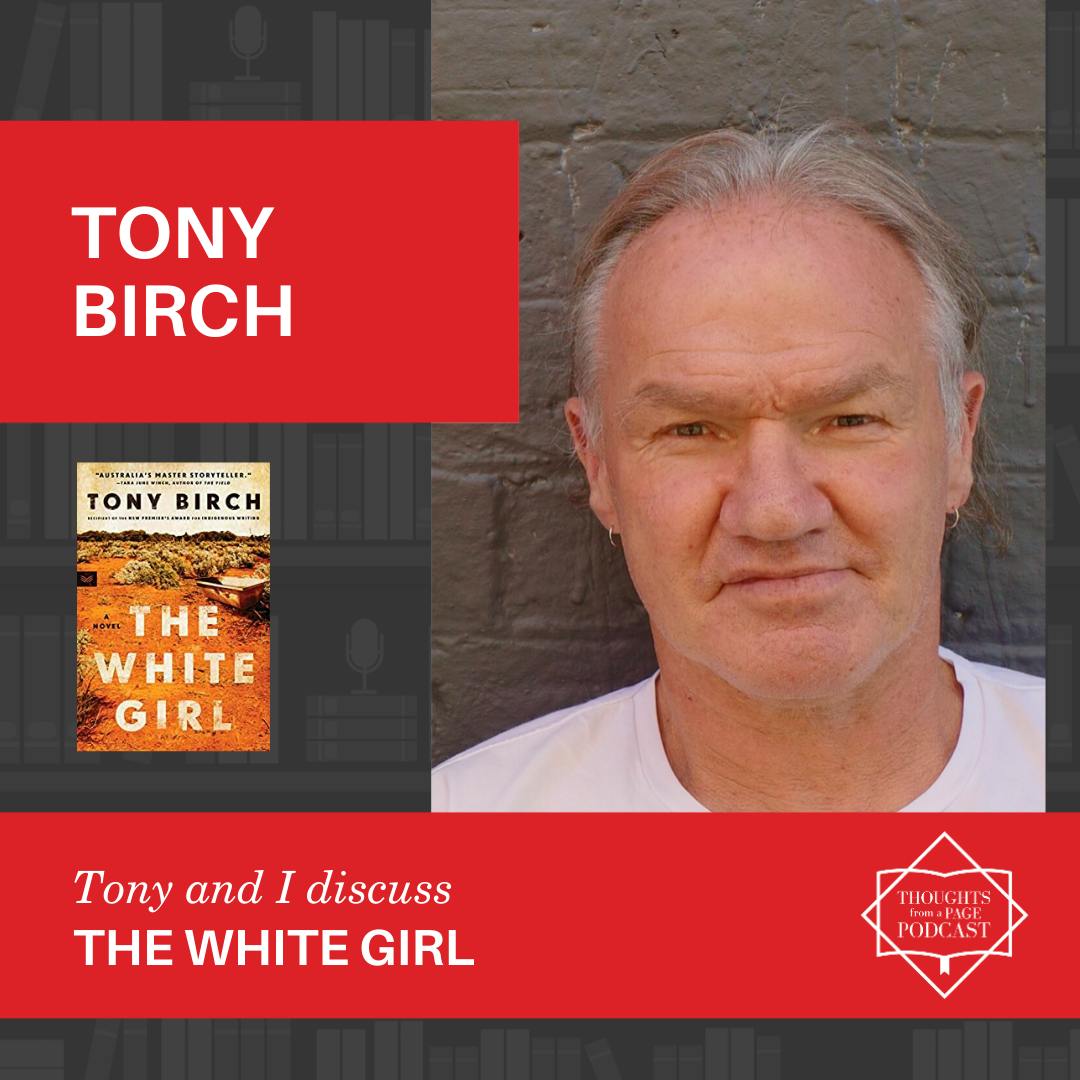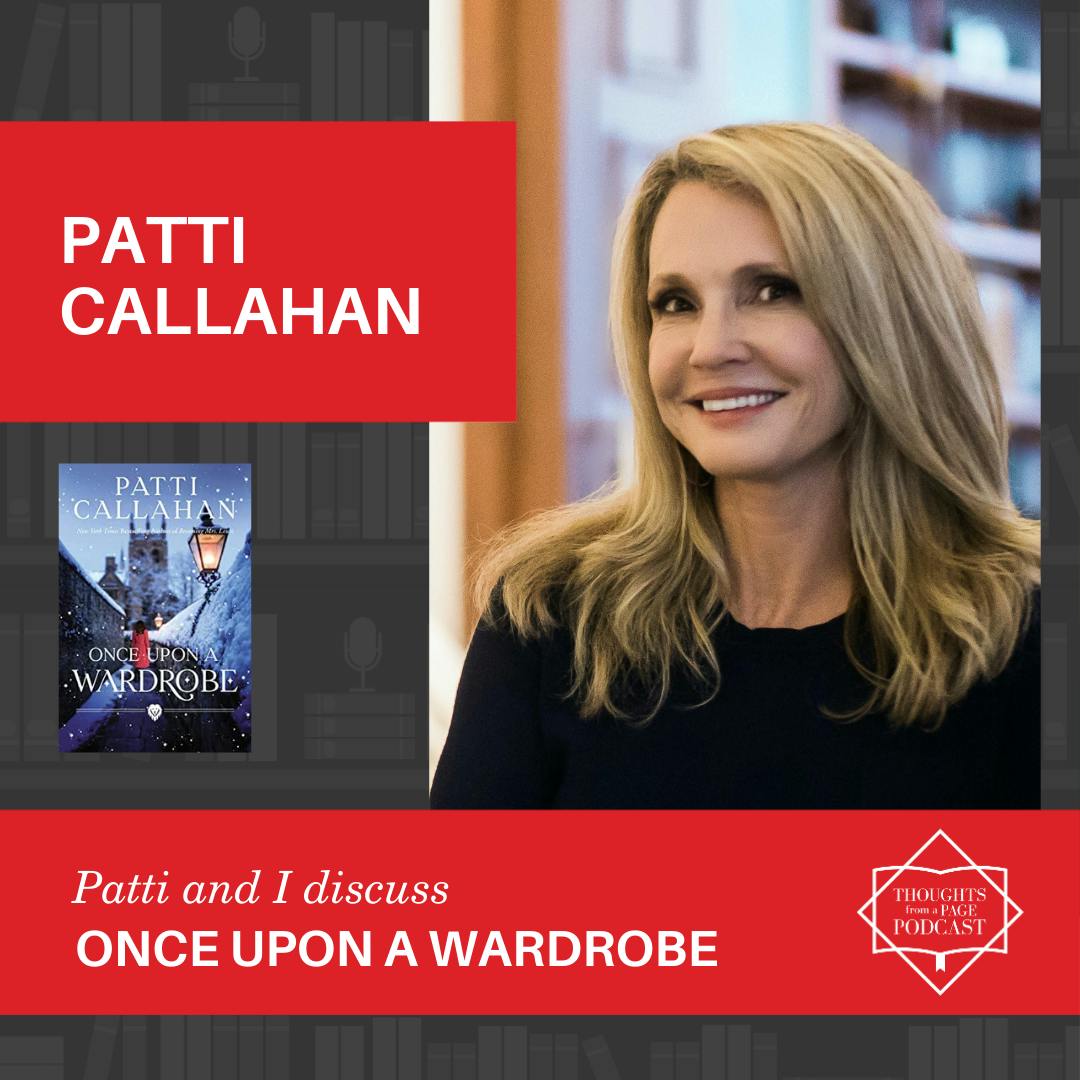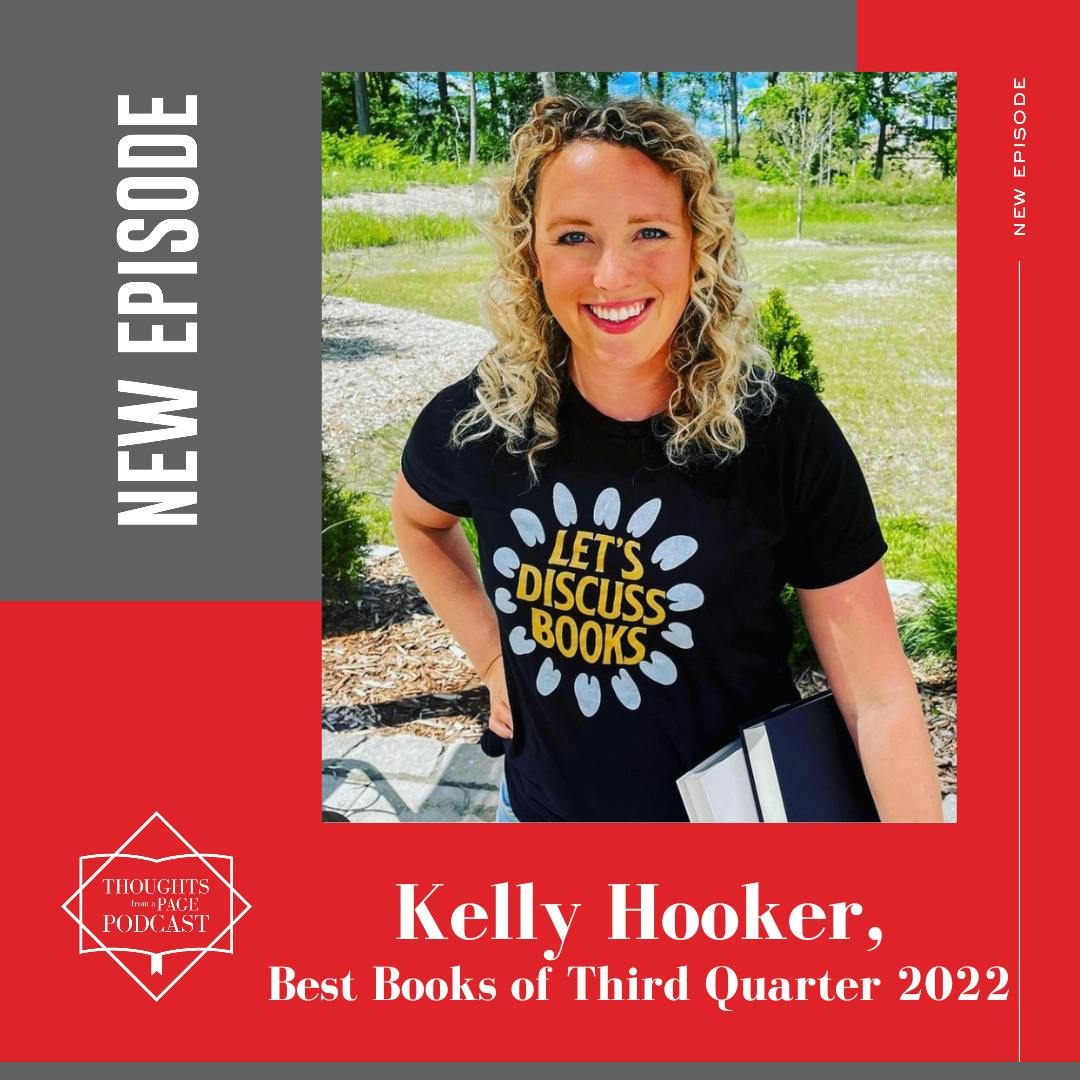Susan Meissner - THE NATURE OF FRAGILE THINGS

Susan and I discuss her latest novel The Nature of Fragile Things, the unexpected book that inspired her to write this story, her interest in the mail-order bride phenomenon, the fragility of San Francisco’s infrastructure prior to the 1906 earthquake, and more.
Susan and I discuss her latest novel The Nature of Fragile Things, the unexpected book that inspired her to write this story, her interest in the mail-order bride phenomenon, the fragility of San Francisco’s infrastructure prior to the 1906 earthquake, her book about the 1918 Spanish Flu and its relevance to the current pandemic, and much more.
The Nature of Fragile Things can be purchased at Murder by the Book.
Susan’s 2 recommended reads are:
- The Exiles by Christina Baker Kline
- This Tender Land by William Kent Krueger
Thanks to The Chanel Sisters by Judithe Little for sponsoring this episode. You can purchase the book here.
If you enjoy reading historical fiction and want to listen to more podcast episodes like this one, try Tori Whitaker, Asha Lemmie, Julia Kelly, Nguyen Phan Que Mai, and Marie Benedict.
SUMMARY KEYWORDS
book, fragile, people, pandemic, writing, earthquake, women, story, great, author, San Francisco, penal colonies, Chanel, mail order bride, podcast, Spanish Flu, hear, cover, reader, life
SPEAKERS
Cindy Burnett, Susan Meissner
Cindy Burnett 00:01
This episode is sponsored by Judith Little's novel The Chanel Sisters, which is available now, and the link is in the show notes. The Chanel Sisters is the rags-to-riches story of two sisters, one famous one forgotten, who changed fashion forever. Gabrielle "Coco" Chanel and her younger sister Antoinette are determined to prove themselves to a society that is never accepted them. Their journey propels them from the convent orphanage in France, where they were raised as charity cases to a small hat shop on the Rue Cambon in Paris. But when World War One breaks out, their lives are irrevocably changed, and the sisters must gather the courage to fashion their own places in the world, even if it's apart from each other. Entertainment Weekly calls The Chanel Sisters a true-to-life tale of heartbreak, loss, love and triumph. You can purchase The Chanel Sisters wherever books are sold. In December, I interviewed Judith about her book, and you can listen to my podcast episode. The link is in the show notes. This is the Thoughts from a Page Podcast where I interview authors about their latest works. My name is Cindy Burnett, and I love to talk about books. For more book recommendations, check out my website thoughtsfromapage.com and follow me on Facebook and Instagram at @thoughtsfromapage and on Twitter at @burn555555. I want to say thanks to Carol of @readingladiesbookclub for sharing my podcast in a blog post and breadfan 42 for reviewing my podcast on the Apple Podcast platform. I really appreciate everybody who's making an effort to share the podcast with others; it really helps. Today I am interviewing Susan Meissner about The Nature of Fragile Things. Susan is a USA Today bestselling author of historical fiction with more than half-a-million books in print in 15 languages. She is an author, speaker and writing workshop leader with a background in community journalism. A California native, she attended Point Loma Nazarene University and is also a writing workshop volunteer for Words Alive, a San Diego nonprofit dedicated to helping at-risk youth love for reading and writing. I hope you enjoy our conversation. Welcome Susan. I'm really excited that you're here today to talk with me about The Nature of Fragile Things. How are you?
Susan Meissner 02:19
I'm great. I'm so happy to be here.
Cindy Burnett 02:21
Well, why don't we start out by talking a little bit about The Nature of Fragile Things. Why don't you tell me about it?
Susan Meissner 02:27
Well, the title of the book, I want you to, to consider that not everything that looks fragile actually is because, you know, we all know the nature of something fragile is that if you drop it, it will break. If you hurl it, it will shatter. But I want to suggest that not everything is as fragile as it looks. In fact, some things and some people are far more resilient than they outwardly appear. And it's about an Irish immigrant; she's telling the story. It's in her point of view. And she's living in 1905 in Manhattan in a terrible tenement situation. And she wants out of New York for a lot of reasons. So she answers a mail order bride ad from a San Francisco widower who wants a new wife for himself and mother for his five-year-old daughter. That's how desperate she is to get out of New York. And when she arrives and marries this man, at first, everything is fine. She's got a beautiful house to live in, a daughter to love, she can't have children. But there's something up with this man that she's married. He's not abusive. He's a good provider. But she can just tell there's just something not quite right. And everything kind of cracks wide open, figuratively and physically, when the earthquake strikes about a year later in 1906.
Cindy Burnett 03:35
So you tackle two different things, the San Francisco earthquake and the mail order bride topics. How did you decide on each of them and then to combine them?
Susan Meissner 03:44
Well, I like to give my characters from the get go, there's some sort of nut they need to crack. There's got to be some sort of tension on page one so that the reader will immediately be emotionally invested. That's that's what I want to do for the reader is invite you want to an emotional ride, where you can feel invested in the characters life. And so she's got to have some sort of something going on in her life. And the mail order bride thing to me is timely for that era. And it's such a bold move. I have I guess admiration for anybody who's willing to take that kind of risk. And I wanted to explore it because I don't think I would ever do that myself. I wanted to explore what it might be like. And then the earthquake just provided such a great backdrop because it was it was defining for San Francisco. And it's a great backdrop for exploring what it's like to have your world shattered, you know, like the ground literally. Yeah, nothing is the same after that. I mean, you're different. The world around you is different. It's on fire. You're like running, there's escape. There's tension from trying to find safety and wondering if you ever find it. So all of those things kind of coalesced to I think bring about a plot, that I hope anyway, is page turning.
Cindy Burnett 04:55
Well, it's sort of hard to imagine being a mail order bride these days, but I think you really do have to cast yourself back, like you said, to that time period, and it was much more common. But either way, it is definitely a bold step. I can't imagine doing something like that.
Susan Meissner 05:09
Yeah, one of my favorite shows when I was growing up, this is gonna date me a little, was gosh now I cannot remember, oh, Here Come the Brides. And it was a show that ran, I think, in the late 60s, early 70s. And it was about these women coming out to you know, the Pacific Northwest, to Seattle, because there were no women, and the men needed wives. And so all these women come out to the Pacific Northwest to you know, not only hopefully get married, but like strike, strike out for something totally different from their, their ordinary life. And again, that to me is so it's just ripe for storytelling.
Cindy Burnett 05:41
It definitely is. And you must have had to do a lot of research on both topics. So do you want to talk a little bit about that?
Susan Meissner 05:47
For the mail order brides, I did not do as much research as you might think. Because really, it was just an advertisement. And she just answered it. So really, it was almost like answering it like a Help Wanted ad. Except this one was so very different. He was advertising for a wife and mother. And she answered it, applied, I guess, applied for the job. And he chose her. And so to me, it was almost like it was signing up for like, the most unique job ever. And because she has some things that she's kind of running from, that had to be more appealing than staying where she was, which I think is rather unique and fraught with possibilities.
Cindy Burnett 06:29
That's true. And I think you know, that time period was a rough time in New York City. And there was a lot of poverty and all the tenements. So even without something you're running from, you could see where people might think, well, this has got to be better than what I'm living now,
Susan Meissner 06:42
For a lot of these women, you know, young, single women, especially Irish women, they were getting, you know, just pennies on the hour and working 12-14 hour days, it was no kind of life, that's for sure.
Cindy Burnett 06:55
Well, tell me about the earthquake research.
Susan Meissner 06:58
Well, there's a lot of information out there, which is great. I didn't have to go hunting like, you know, some topics that you might choose, there just isn't a whole lot there. But there's, there's been much written about the 1906 earthquake, because it was so defining. And because it you know, it changed the face of what was called Paris of the West. You know, San Francisco had almost half a million people living in it. On the day of the earthquake, it was a very affluent city. There was a lot happening - commerce, arts, all of it. It was a very happening city, if you will. And I read several books, one of them in particular is A Crack in the Edge of the World by Simon Winchester, which if anyone's interested in knowing more, it's a wonderful book, he kind of writes like Erik Larson. So he writes, what I like to call narrative nonfiction. It's really well done. And what's great about it is it's cited all over the place. So if I wanted to know more about something he mentioned, all I had to do was look at his footnotes. And I could, I could find exactly what I needed to go where I needed to go to find out more. So there was lots of physical books to look at. The San Francisco Library Downtown Branch has a wonderful historical section up on the third floor with lots and lots of items, you can look at. They are reference items, so you can't check them out. But you can sign up to see them. That was very helpful. Also in Golden Gate Park at the museum there, the California Sciences Academy, they have an earthquake house. So it's a simulator that you walk inside, it shakes the room, as if you were experiencing a nearly 8.0 Richter Scale quake, which is what the 1906 quake was. So it's, I mean, you're feeling it, you're experiencing it, you're hearing it - pretty fascinating. And it's great to know that you can hold on to the handrail, and you'll be fine. It's the real deal. And then, of course, they have an exhibit there with, you know, big pictures, so that you can see the before and then what it was like afterward.
Cindy Burnett 08:50
I have never been to that museum there. I love San Francisco, and I'm not even sure I've heard of that. So I'm gonna have to add that to our list. And next time we're there.
Susan Meissner 08:58
Yes, if you've got children, it's a great location to take them because it's a lot of hands on. It's a science museum, but it's the kind of science museum where they want you to experience not just look.
Cindy Burnett 09:08
They love, I have teenagers so they're 15, 17 and 19, but they love the other one that's there around the other side on the on the water and I can't think of the name, the Imaginarium or something like that. Yes, yes. Yes. They love going there, and that's really great because I mean, it goes, it covers so many different topics that it's definitely not like a children's museum where you think of young children. My teenagers thought it was a ball.
Susan Meissner 09:29
Oh, yeah, definitely. I would say the Academy Museum on the Golden Gate Park is great for teenagers because it is that kind of experience where it doesn't feel like you're in, it's not like a playground, like a children's museum. It's the kind of experience that any any age can appreciate.
Cindy Burnett 09:45
Okay, good. Well, we'll add that to our list. Well, do you have a highlight of writing in The Nature of Fragile Things?
Susan Meissner 09:50
A highlight? Wow, that's a really great question. I think there's a thread of female solidarity running through this novel. And that was fun for me to write. And believe it or not, the kernel of the idea came from reading Big Little Lies by Liane Moriarty. And watching the series on HBO. That's a contemporary book with a contemporary setting. But it's about women coming together to help each other against a rather formidable opposition. And I gained some inspiration from that, and I used it to kind of craft this story. So that my main character Sophie, she's not alone, she begins the story feeling rather alone. And all she has is that little girl in her life, because her husband's rather aloof and distant, but she doesn't stay alone. In fact, she's joined by other people and the way they come together, I really enjoyed exploring that. And imbuing their friendships with just strength and resiliency. That part was fun.
Cindy Burnett 10:54
That's so interesting to me that it came from Big Little Lies.
Susan Meissner 10:58
Yeah.
Cindy Burnett 10:59
Well, tell me about the title. I'm always, I'm a very big title and cover person. So I always love to know how the title came about, how the cover came about. So let's talk about that.
Susan Meissner 11:07
Sure. Well, when I think about a title, sometimes the title reveals itself to me as I'm writing. Sometimes I'll start with a title, and the book will evolve out of that. And sometimes I struggle to find the right title. And this one, I think I did hem and haw for a little while about it, because I wanted and I want this for all my titles, I want them to be more than just the title. I want them to have like secondary and tertiary meaning. And with The Nature of Fragile Things, because fragile things break, when force is pressed against them, they will break that that is their nature. That to me started out the story of just like, generally speaking, you know what happens when something is shaken? What happens when something delicate is shaken? And we all know what happens because we've dropped glasses on our kitchen floors. We've seen it. When you take it down deeper and you talk about well, what about people? What happens when you shake a person? What happens when you shake a fragile person, the delicate person? What if maybe that fragile, delicate person's not so delicate, after all? So I kind of started with a surface level of what a fragile thing is, and what the nature of something fragile is. And I took it down deeper, so that when you're reading a story, that title hopefully becomes more meaningful to you as you go.
Cindy Burnett 12:25
I like that, especially with you also overlaying the earthquake and thinking of that aspect of fragile and everything being shook up.
Susan Meissner 12:33
Because the thing about San Francisco is people wonder, well, how how was it that it was terrible was catastrophic? What happened? And it's because, you know, the earth itself isn't that fragile. It was the city that was fragile. They built these buildings of wood on fragile foundations. Okay, they went first thing, and then they built water mains under the ground, and gas lines. And all those were fragile - they broke, they broke open. So you had fires starting within seconds of the quake. And because there were gas lines, the fires were fed, we had a lot of fuel. And because the water mains had broken because they were also fragile, there was no water to fight it. So the fire brigades had nothing to fight with. And they ended up having to use dynamite, blowing up house after house after house to create a fire break, and they finally bombed, dynamited Van Ness, which is a very long street, runs north and south. There are many, many stately homes on it. And they dynamited more than a mile of it to create a fire break because there was no end of fuel for these fires. They merged after a couple hours. They started out everywhere, probably 50 of them. And they just became this wall, this infernal wall that just was moving west at incredible speed, and devouring everything in its path. Because everything that it was touching was fragile. And so we learn, we learn from things like that how to make things stronger the next time, but that's why the city was so devastated because everything that had built itself on was fragile.
Cindy Burnett 14:04
Well, I knew the fires had broken out immediately, but I wasn't totally certain, I know, I'm not even sure I thought about exactly why. And so that's interesting the way you're explaining it, and it explains why everything burns so quickly.
Susan Meissner 14:14
Yeah, they tried to bring in water from the Bay, the Oakland Bay, and I think they did like up and down like Fisherman's Wharf. And if you've been to San Francisco you know all that coastline where you have all the ferries and the Ferry Building and all of that. They could bring water from the Bay, but the fire was moving west. And, you know, the Ferry Building and Oakland Bay that's all east, and so they could only bring it in maybe a mile, and they couldn't catch up with it.
Cindy Burnett 14:40
That's fascinating. And it does kind of make you wonder about the people that did all the initial planning and building. Okay, so why don't we talk a little bit about your cover, then.
Susan Meissner 14:48
I can say that it's wonderful because I had nothing to do with it. They always asked me do you have an idea for the cover, and all I can do is is send them covers that I like of other people's books because I never really, I can't envision visually, but I have a great cover designer at Berkley. And so the street that you're seeing there, if you google National Archives, San Francisco 1906, that picture will come up. I think it might be Samsone Street. And so it's an actual photograph that they've used for the cover from the damage of the earthquake. And then, you know, superimposed there is this turn-of-the-century woman holding the hand of a little girl. And it's pretty obvious the little girl was looking up at that woman for help, like, what are we going to do now? And, you know, it shows the woman, her back is to you. And so she's looking forward at the destruction. So for me, it's like she's saying, don't worry, I've got this, I'll figure it out. And of course, as she's talking to the reader, you know, she doesn't know what she's gonna do. But she's got that little girl's hand and the little girl is able to trust her. The color scheme, I think, is perfect. Because if the blue is, you know, kind of somber and melancholy, but the pink, I think that pink offers hope. That's how I see it. And so you have those two colors working with each other. I didn't want the cover to seem like it was all doom and gloom. I mean, it gets pretty bad. But there's, there's hope. And especially when you have people coming together who not only love that little girl, but they care for each other, too. And I think that's why the cover works for me is that it, there's, there's so much about it that after you've read the book, even I think you'll appreciate it even more.
Cindy Burnett 16:28
I like that. And I like that they used an actual photograph. I think that's very cool.
Susan Meissner 16:31
Yeah, I like it, too.
Cindy Burnett 16:33
So you've written a number of books. Do you have a favorite of the books you've written?
Susan Meissner 16:37
Oh, gosh, you know, it's always the book I just last finished. And I think it's because I make room for new characters by saying goodbye to old ones. And I don't forget the old characters, they just go to the back of the room and enjoy the rest of their life. And I bring in these new, I bring in this new cast and start working with them. And I fall in love with them. And so they're, they're like at the forefront of my author heart, I guess you could say. And so the favorite of mine right now, I guess is the one might be the one I'm writing right now, which is in its very raw state. It's not going to come out until probably 2022. But it's about three women who are impacted by the eugenics movement, and which was a very sad movement. I couldn't really take somebody's story and retell it because there's just nothing happy about it. So what I did instead was I was inspired by one particular story, and her name is Carrie Buck. In fact, her case went to the Supreme Court, and they used the decision as a landmark for all states to adopt eugenics laws, which means in short, it just means that states were able to sterilize people who were committed to mental hospitals. So it was, it was really sad what happened during that movement, and most states have struck down all those laws now. California was sadly one of the last. They were still sterilizing people up until the late 1960s. I imagine a girl who gets caught up in that and the reason why she is sent to a state hospital is her employer's husband seduced her. She's only 17. She's, so she's pregnant with his child, and the wife is livid. The husband is pretty much, he's milk toast, which is why he took this 17-year-old maid to bed is he's unhappy. And because my character whose name is Madalena, she, she's a, she's a synaesthete, so she has synesthesia, which if you know anything about that condition, it's where senses in the brain get crossed. They cross over each other. So that if you hear something, you see a color. So it's, it's a mixing of the senses. And it only affects 1% of the population, but she has it. And you know, back then they didn't understand much about it. And it was seen as a detriment to somebody, like that is something you do not want. They sterilized her. She has a baby, and then she sterilized, which is really, really sad. But it really, really happened to thousands upon thousands of people. And so to try and make her story happy, was a great challenge to me, but I think, I think I've got it, you know, something terrible happened to her when she was young. But that doesn't have to define the rest of her life, right? Sometimes out of great tragedy, we can rechart a course for our life, and we can find happiness again. And that was my goal with this book.I want to make mine have a happy ending.
Cindy Burnett 19:28
Well, that will be a really interesting story. I look forward to reading it.
Susan Meissner 19:31
Thank you. Yeah, I'm almost done with it. I've got some work to do. And then the rough draft will be done and then I can start polishing.
Cindy Burnett 19:39
Well, my favorite of your books is As Bright as Heaven. It was one of my top reads the year it came out. And I feel like it is a particularly relevant book for this past year with the pandemic and everything we've been going through. I just absolutely loved it.
Susan Meissner 19:54
Thank you so much. Yeah, I never thought I'd be living inside the pages of one of my books, especially that one.
Cindy Burnett 20:00
Exactly. If you had to choose, you're probably like, oh, that was not the one I would have chosen. And I also love A Bridge across the Ocean. Actually, I think that's the first book of yours I read, and I just loved it.
Susan Meissner 20:10
That was a fun one to write too. Yeah, the Queen Mary is not too far from me here. And where I live. I live in San Diego. And so being able to go up to the ship as many times as I wanted to write that book was very helpful.
Cindy Burnett 20:21
Yeah, I liked all the elements of that story a lot. So well, before we wrap up, why don't you tell me what you've read recently that you really liked? Oh, gosh, probably Christina Baker Kline's newest, The Exiles, and it's so good. And I heard her give a book talk about the context of writing that book, which was amazing. So if you're able to hear her talk about it, in any of the Zoom events that authors are doing right now, I would definitely listen to her speak about it. But it's about the Australian penal colonies, and how women were sometimes sent to them for like crimes that you would never consider a crime, like promiscuity or some other kind of like petty theft or whatever. They would convict these women in, in Britain, or elsewhere in the UK, and they'd be sent to these penal colonies in Australia. And so she's got a story of these three women and the characters are just rich, and the setting is just amazing. And the takeaway to. It was a wonderful book, I highly recommend it. And then the other one that I've read most recently, and I think people are probably seeing it around town, is This Tender Mercy by William Kent Krueger, and it's set during the Depression. The narrator of the story is like this 14-year-old boy. And it's about, it's a story about kids in harm's way, sort of like Christina Baker Kline's The Orphan Train. These kids are experiencing adult-sized problems, and they shouldn't have to. They should not be having to make the choices they're making and doing what they're having to do to survive. And so I appreciate the skill that it takes to have a 14-year-old boy, be a narrator, for a story that a woman like me in my 50s can read and enjoy. It's really, really good. And the ending is just so wonderful. So William Kent Krueger is the author of that one. Both of those have been recommended a number of times. I think they have both done well and resonated with a lot of people.
Susan Meissner 22:16
Yeah, I would say both of those writers know how to write without, I mean they're not over the top, it's not fluffy. But the descriptions are so apt, that you just, you see, you feel, you hear everything they are writing, because they're just that skilled at what they do.
Cindy Burnett 22:31
And I think that is what resonates with people is when you feel like the sense of place is so strong, and the characters and the descriptions - that you're sort of in the story with them.
Susan Meissner 22:40
Yeah, I agree. I really like authors who are able to transport. I aspire to that every time I write - can I transport my reader to this time and place and will they feel and see and hear and smell what my character is feeling, hearing and smelling? And you know, can it can I do that? Can I, can I provide that kind of transformative experience. And I'm always really glad when I hear from a reader that says I did that.
Cindy Burnett 23:02
Well, I think that's what I liked so much about As Bright as Heaven. Was that I felt like I was there on the streets with them in Philadelphia. And as the bodies were piling up, it was so vivid.
Susan Meissner 23:11
Yeah, writing that book. Because Philadelphia was such a hard hit city, there's been much written about it. And actually the Spanish Flu pandemic really has only just kind of had a renaissance as far as awareness. It had almost been forgotten. In fact, one of the books I read for research was called America's Forgotten Pandemic, because it happened 102 years ago, it kind of fell away as far as awareness. And you know, two years ago, when this book came out, when it was the centennial of the Spanish Flu pandemic, you still didn't see a whole lot of people knowing what it was or its impact. Because it was the second most deadliest pandemic of all time, all time. There's only one worse. And that's the Black Death of Medieval times. You know, 50 million people died of Spanish Flu pandemic - 650,000 in America alone. More US soldiers died of Spanish Flu in the trenches than then by, you know, gunfire in World War One. So it was exponentially worse than what we're experiencing now. And I think it deserves to be remembered, those 50 million souls deserve to be remembered in some way. And so this novel, I think, is one way that people can be reintroduced to what happened, so that they can, we can give some sort of, you know, value to those 50 million souls, and also to learn from the past, because you don't really learn from the past, if you don't look at it.
Cindy Burnett 24:30
Well, your Author's Note does a really great job of kind of talking about everything you just mentioned, because I wasn't familiar with that pandemic at all until I read your book, and I'm sure it's doing great in 2020 as people are thinking, oh, I would like to read about, you know, the last pandemic we had here and just sort of see how they compare if there's anything to be learned from that one. So you were ahead of your time.
Susan Meissner 24:50
I think people are wondering, okay, we've gone through this before, how did we do how did we come out on the other side? And so I think books like this, which showcase the human element, because it's fiction, it also shows well, what was it like afterward? Because we don't know where our end is, we know that an end is coming. But like, when is it? And how are we going to be on the other side of it? And so books that talk about the past, in a similar circumstance, in like in a parallel kind of experience, give you a little bit of a view as to what we might be like on the other side. And I think with Spanish Flu pandemic, the reason why was forgotten was it was so, so terrible. And the war had just ended. And World War One was also terrible. And I think because they both ended at about the same time, people just shut the door on all that pain. And that's how they chose to move on from it was forget it. And that's exactly what happened is generations went by and the door was still shut. And so we've thrown it open now because it matters now. But I think that's just it's one way I think we humans have tried to deal with great loss and pain and heartache is we have some choices to make. And the one they made 102 years ago was to shut the door on it.
Cindy Burnett 26:00
Well, I do think because it was right at the tail end of World War One, kind of two different cataclysmic events that probably World War One really overshadowed that. You know, and then you headed into the 20s, and then the Depression, you know, so there were just a lot of things that sort of ended up being much larger, maybe not much larger in terms of the loss of life. But in terms of the things that people hear about and the length of time they lasted. You know, it's interesting that you talk about the getting to the other side of it, because I have a 15-year-old son. And he and I have talked about this a lot. Because I do not like wearing a mask, I fully get that I need to and I totally wear it, I am not an anti-masker, I just don't like wearing it. And so, you know, I've just said to him periodically, like I wonder when we will no longer have to wear masks. And he's like, Well, you know, if you look at the photos from 1918, they obviously were but then in the 20s, they weren't so you know, it's kind of been reassuring to me. So it's funny that you mentioned that kind of other side of it. Because I do think we're all wondering when is this going to be over? And what is it going to look like?
Susan Meissner 26:57
I think it's wise to be thinking about that. And when you look at pictures like 1920, 1921, you know, post-pandemic, you see a very happy world, you know that that was the era of the Roaring Twenties, which were crazy. But it just showed a world ready to be happy again. And I think that is encouraging to me that not only did it end, and not only did the economy recover, it did, but people were really ready to embrace happiness again. And I like thinking about that, that not only will there'll be an end. But this one, this is not going to be our undoing. And we're not going to come out on the other side, antisocial people who have decided, oh, well, we like living in isolation, you know, we really are
Cindy Burnett 27:43
Never going anywhere again.
Susan Meissner 27:44
We're hungry for community, I feel like that's what's going to happen is we might be able to focus better on our relationships post-pandemic, which is good. But I don't think we're going to see the end of travel or wanting to get together, the, you know, big community events. I still feel like that's part of the fabric of who we are. And I bet we'll return to it.
Cindy Burnett 28:04
I agree. And I guess it's just a wonderful idea to focus on that part of it. Like I need to do that more often, instead of worrying about the kind of here and now. And you're right. I mean, it's good to look at those events and think, okay, people made it through it. And then they had a very fun decade of the 20s. So maybe we look at it that way that the 2020s are going to be a big blast, just like the 1920s were. Well, I really appreciate your time, Susan. I really enjoy talking with you on the Thoughts from a Page Podcast, and I am so glad you joined me.
Susan Meissner 28:31
Oh, it's my pleasure. Thanks so much for having me on your show.
Cindy Burnett 28:36
Thank you so much for listening to my podcast. If you liked this episode, and I hope you did, please follow me on Instagram and Pinterest at @thoughtsfromapage, tell all of your friends about the podcast, and rate it wherever you listen to your podcasts. I would really appreciate it. Susan's book can be purchased at Murder by the Book were I work part time, and the link is in the show notes. Thanks to Judith Little and The Chanel Sisters for sponsoring this episode. Thanks to K.P. Regan for the sound editing, and I hope you'll tune in next time.
New to Thoughts from a Page Podcast?
Here are some great episodes to start with.

















